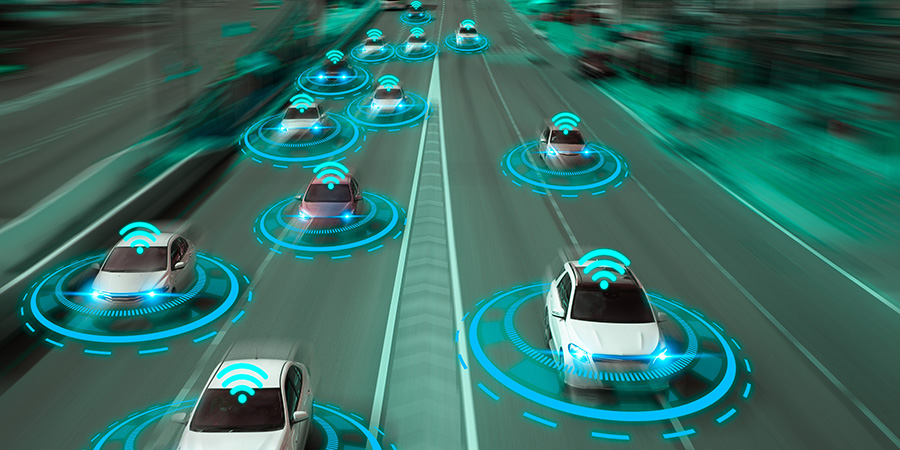The vision of electrified and self-driving vehicles, once a futuristic promise, is swiftly becoming a tangible reality, heralding a paradigm shift that is indeed revolutionizing the automotive industry. This evolution also profoundly impacts the telecommunications sector, where the integration of smart connectivity and 5G networks is central to enabling the seamless operation of intelligent vehicles.
The convergence of automotive and telecommunications technologies is forging new pathways in connectivity, data management, and safety protocols. This synergy is paving the way for enhanced vehicle-to-everything (V2X) communications and fostering the realization of smart city ecosystems.
According to Mordor Intelligence, the electric vehicle charging station market in the Asia Pacific is set to surge from USD 11.41 billion in 2024 to USD 37.89 billion by 2029, reflecting a monumental shift towards sustainable mobility. Leading this charge, China saw electric vehicles (EVs) capture 37% of its new car market in 2023. China views its automotive sector as a hub for technological advancement and environmental stewardship and has consequently embraced artificial intelligence (AI) and data-driven innovations.
Holistic Industry Progression
The emergence of smart vehicles extends beyond their physical form to encompass intelligent production methods, interconnected infrastructure, and sophisticated networking capabilities. This holistic approach integrates autonomy, connectivity, electrification, and sustainability as drivers of industry progression. Notably, regulatory frameworks, technological breakthroughs, and commercial ventures are accelerating the evolution towards fully intelligent and connected vehicles.
Moderated by Lin Li, Head of Ecosystem Engagement at GSMA Greater China, the Smart Mobility Summit at MWC Shanghai featured presentations by industry luminaries such as Jincai Yang, President of Connected Vehicle Innovation Center, Government and Enterprise at China Telecom; Yongde Wang, General Manager, Carrier XtoB Solutions at Huawei; Jianxiong Xiao, CEO of AutoX; and Jinhang Gao, Deputy Chief Engineer at Shanghai Jinqiao Intelligent Connected Vehicle Development Co., Ltd. These leaders showcased the cutting-edge advancements and strategic initiatives shaping the future of automotive technology.
The panel discussion included insights from Hongbin Ma, Deputy General Manager, Carrier XtoB Solutions at Huawei; Liang Dong, Chief Engineer at Hong Kong Applied Science and Technology Research Institute Company Limited (ASTRI); and Yong Cai, Chief Software Development Engineer at Hozon New Energy Automobile Co., Ltd. Together, they explored innovative solutions, commercial opportunities, and companies' future plans, and discussed standardization efforts crucial for industry transformation.
Also Read: Automotive revolution: The race towards electric cars and autonomous driving
C-V2X Innovations
Driving this innovation in the transport industry are Cellular Vehicle-to-Everything (C-V2X) and 5G technologies, encompassing components like Vehicle-to-Vehicle (V2V), Vehicle-to-Infrastructure (V2I),
Vehicle-to-Pedestrian (V2P), and Vehicle-to-Network (V2N). This approach envisions a future where cars communicate seamlessly with each other, their surroundings, and connected entities. Real-time and accurate communication capabilities are pivotal in unlocking the full potential of mobility.
While connected car technology isn't entirely new, it's rapidly evolving to facilitate C-V2X capabilities. Early innovations, such as car phones, were precursors to scaled vehicle connectivity, establishing the first live links from vehicles to the outside world.
Data has also become the driving force behind modern automobiles, with networks serving as critical pipelines. While fully autonomous vehicles remain a future aspiration, vehicle connectivity is crucial for exchanging data with external systems, powering features like infotainment, automated safety measures, OTA updates, and other connected services.
Connected-car sales surpassed non-connected vehicles for the first time in 2022, underscoring the growing importance of vehicle connectivity. This trend is expected to continue as the automotive industry embraces digital transformation, integrating solutions like 5G, private networks, fiber, Wi-Fi, and edge computing throughout the product lifecycle—from design and manufacturing to maintenance and disposal. Artificial intelligence (AI) is also contributing to meeting escalating demands for data.
Also Read: Telecom Operators’ Cloud Investment Fuels 5G Automation Surge
Driving the Industry Forward
Telecommunication companies are at the forefront of this transformation, collaborating with OEMs, government bodies, industry associations, and cloud service providers to manage the surge in data from connected vehicles. This partnership is essential for anticipating and capitalizing on emerging use cases that leverage the wealth of new connected car data, ensuring telecom networks can support the future of intelligent and connected mobility. One notable collaboration is between Nokia and FAW Group, which is transforming the Chinese automotive sector. Nokia's advanced network solutions are enabling FAW Group to enhance its digital infrastructure, facilitating the development of smart vehicles and intelligent manufacturing processes.
In India, Vodafone Idea is making significant strides in enhancing the digital experience within the automotive industry through its IoT solutions. By leveraging the power of IoT, Vodafone Idea is enabling automotive manufacturers to offer more connected and intelligent vehicles.
Meanwhile, China Unicom and G+D are pushing boundaries with eSIM innovation, which can be seamlessly integrated into various sectors, including automotive. eSIM technology allows for remote provisioning and management of cellular connectivity, simplifying the process of connecting vehicles to networks.
In Malaysia, CelcomDigi and Yinson have partnered to accelerate e-mobility, showcasing another facet of how telcos are influencing the automotive industry.
Additionally, Airtel's IoT solutions are set to power Matter AERA motorbikes, demonstrating how telecom companies are integrating IoT technology into two-wheelers.
Telecom Review Asia Industry Insights: Asian Telecom Leaders Unveil the Transformative Impact of 5G-Advanced
Closing Statement
As vehicles become more connected and autonomous features evolve, the need for reliable, high-throughput, low-latency network connections becomes paramount, highlighting the importance of platforms like MWC Shanghai where industry leaders showcase and discuss advancements in 5G and connectivity solutions.
Robust, multifaceted networks ensure seamless V2V and V2X communication, aiding in the enhancement of intelligent traffic systems, pedestrian technologies, and other IoT devices. It’s worth noting that cybersecurity is crucial for safeguarding these interconnected systems.
Telecom Review Asia Analysis: A New Era of Comfort and Wellness on Wheels: Automotive Healthcare Innovations
Also Read: China's Tech Dominance and its Impact on the IoT Sector in 2024
Continue Reading: Rebuilding the Future: A Glimpse of How Some ‘Smart Cities’ Will Look in Asia











